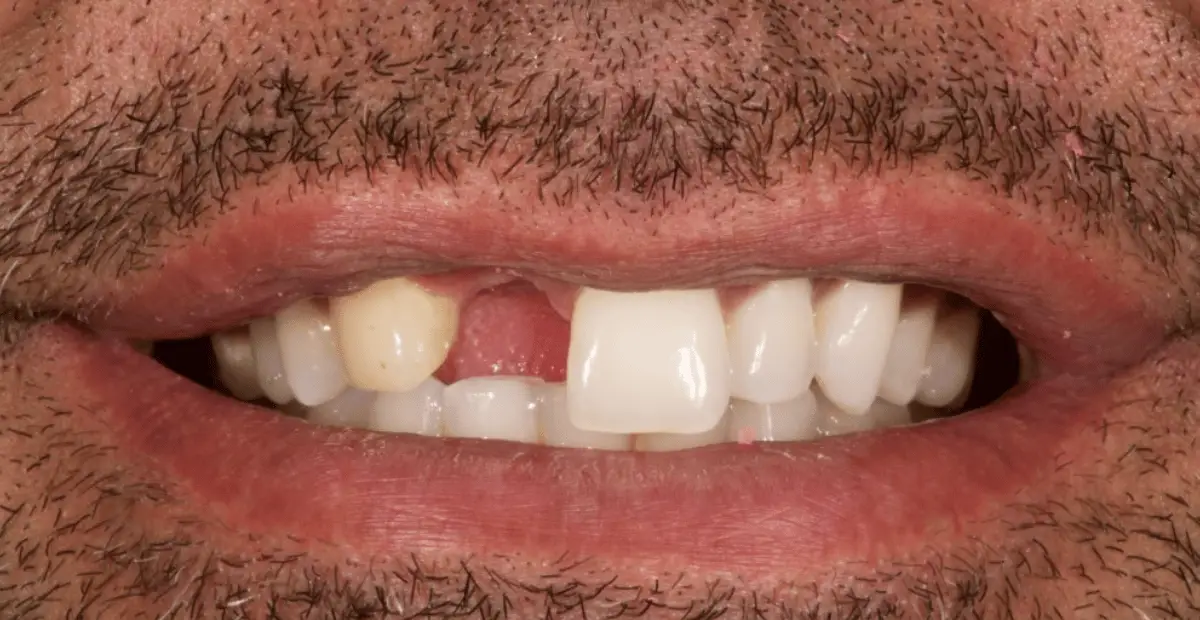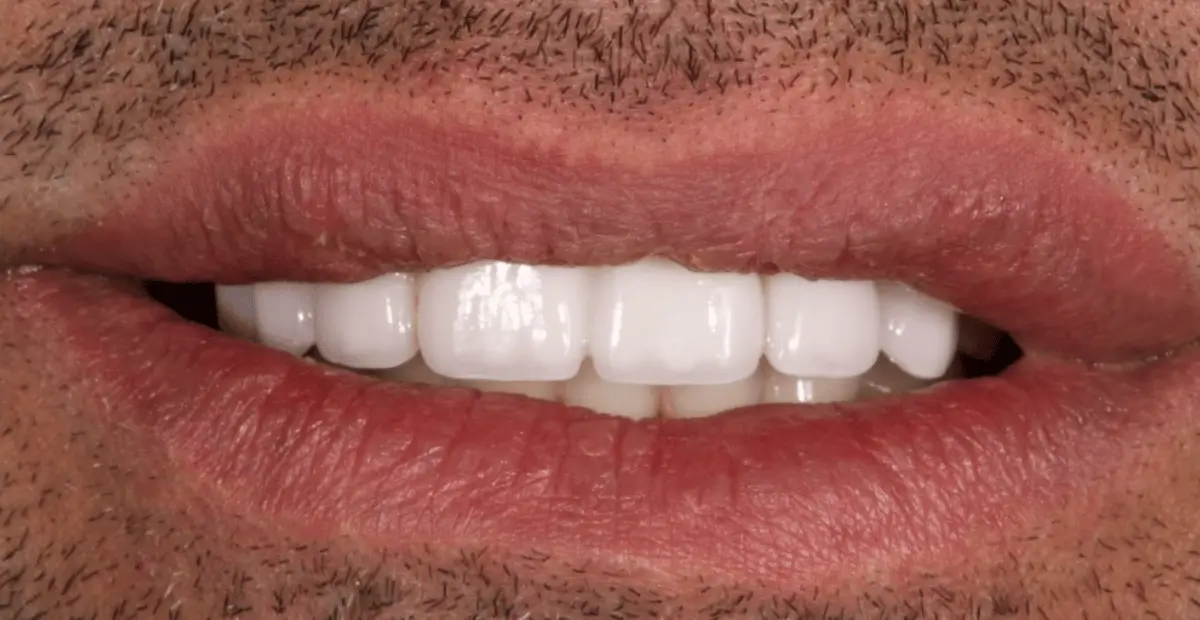Dental treatments offer long-lasting solutions, but what procedures are truly permanent? Learn about dental implants, crowns, veneers, and more, their longevity, and how to maintain them.
Prefer to listen? Here’s the audio summary of this post

Losing a tooth or dealing with damaged teeth can significantly impact your ability to eat, speak, and smile confidently. Fortunately, modern dentistry offers a wide array of solutions to restore your smile and oral function. While many dental treatments can last for a long time, patients often wonder which ones can truly be considered “permanent.” Understanding the longevity and maintenance needs of different restorative procedures is key to making informed decisions about your oral health.
At Plaza Dental Specialty Group, serving Gardena, CA and Los Angeles, CA, we understand the desire for durable, long-lasting solutions. This post will explore various dental treatments often considered permanent or semi-permanent, helping you understand their benefits, lifespan, and how proper care can maximize their durability.
When we talk about “permanent” dental treatments, it’s important to understand that dentistry, like many medical fields, often uses the term to describe solutions designed to last for many years, potentially a lifetime, with appropriate care. Unlike removable options such as traditional dentures, permanent solutions are fixed in the mouth, offering greater stability, comfort, and a more natural feel and function. These solutions aim to restore the appearance and function of natural teeth or replace missing teeth effectively.
Key characteristics of permanent dental treatments include:
Often considered the gold standard for replacing missing teeth, dental implants are the closest thing to a permanent tooth replacement. An implant consists of a titanium post that is surgically placed into the jaw bone, serving as an artificial tooth root. Over time, the bone fuses with the implant in a process called osseointegration. Once healed, an abutment is attached to the implant, and a custom-made crown is placed on top.
Dental implants prevent bone loss that typically occurs after tooth loss, preserving the jaw bone structure and facial contours. With proper care and maintenance, the implant post itself can last a lifetime, though the crown may need replacement after 10-15 years due to wear and tear. They offer exceptional stability and function, allowing you to eat virtually any food and maintain a confident smile.
Dental crowns are tooth-shaped caps placed over a damaged or weakened tooth to restore its shape, size, strength, and appearance. They are also used in conjunction with dental implants or attached to adjacent teeth to support a dental bridge. While not a standalone replacement for a missing tooth, a crown permanently covers the existing tooth structure or implant abutment.
Crowns can be made from various materials, each offering different benefits in terms of durability, aesthetics, and cost:
The lifespan of a dental crown typically ranges from 5 to 15 years, sometimes longer, depending on the material, the patient’s oral hygiene habits, and the forces placed on the crown (like grinding teeth). Proper care involves regular brushing, flossing around the crown, and avoiding chewing hard objects.
Crowns are excellent for salvaging a damaged tooth when sufficient tooth structure remains. They differ from fillings (which repair smaller areas of decay) and veneers (which cover only the front surface of a tooth for cosmetic purposes). Compared to dental bridges, crowns restore individual damaged teeth rather than replacing missing teeth by bridging a gap.
Dental bridges are used to bridge the gap created by one or more missing teeth. A traditional dental bridge consists of one or more artificial teeth (pontics) held in place by dental crowns cemented onto the natural teeth or dental implants adjacent to the gap.
Bridges provide a fixed solution for tooth loss, restoring your smile, ability to chew and speak, and preventing remaining teeth from shifting. They offer a stable alternative to removable partial dentures. Types include traditional bridges, cantilever bridges, Maryland bridges, and Implant-Supported Bridges.
With good oral hygiene and regular check-ups, dental bridges can last 5 to 15 years or even longer. The longevity depends heavily on the health and strength of the supporting teeth or implants, as well as the bridge material. Decay or damage to the anchor teeth is a common reason for bridge failure.
Advantages include restoring function and aesthetics, preventing shifting of adjacent teeth, and being a fixed solution. Limitations include the need to prepare (shape) the adjacent teeth to accommodate the crowns, which is not necessary with dental implants. Implant-Supported Bridges overcome this limitation by using implants for support instead of natural teeth.
Dental veneers are thin, custom-made shells, typically made of porcelain or composite resin, that cover the front surface of teeth. They are primarily used for cosmetic purposes to improve the appearance of teeth that are discolored, worn, chipped, fractured, or slightly misaligned.
Veneers are bonded to the tooth’s surface, creating a smooth, natural-looking facade. They are considered a permanent cosmetic dental treatment because applying them usually requires removing a small amount of enamel from the natural tooth, making the process irreversible.
Porcelain veneers typically last 10 to 15 years, while composite resin veneers may last 5 to 7 years. Their lifespan depends on the material, the patient’s biting habits, and how well they are cared for.
Caring for veneers is similar to caring for natural teeth: brush twice daily, floss daily, and attend regular dentist appointments. Avoid using teeth to open packages or bite on hard objects, as this can chip or break the veneer.
Dental fillings are used to restore teeth damaged by cavities (tooth decay). While often called “permanent,” their lifespan varies depending on the material used and the size and location of the filling.
Common filling materials include:
Amalgam and gold fillings are generally the most durable. Composite fillings are less resistant to wear and staining over time but are popular for their appearance. The durability also depends on the size of the filling and the forces it withstands during chewing.
The choice of filling material depends on factors like the size and location of the cavity, cost, aesthetic preferences, and the dentist’s recommendation. While not truly permanent, fillings provide a long-lasting restoration for damaged teeth.
Root canal treatment is a procedure to save a tooth with an infected or damaged nerve (pulp). It involves removing the infected tissue, cleaning and disinfecting the inside of the tooth and its roots, and then filling and sealing the space.
The treatment typically involves accessing the pulp chamber, cleaning the canals using specialized instruments, disinfecting the area, and then filling the canals with a biocompatible material (gutta-percha). The tooth is then sealed, usually with a filling or a dental crown.
A successful root canal treatment can save the tooth for a lifetime. The tooth itself remains in the mouth, preventing the need for extraction and preserving the jaw bone. However, teeth that have undergone a root canal can become brittle over time and are often recommended to be covered with a dental crown to protect them from fracture and ensure their long-term survival.
Proper care after a root canal involves maintaining good oral hygiene, avoiding chewing on the treated tooth until it’s fully restored (usually with a crown), and attending regular dentist check-ups.
The longevity and performance of many dental treatments have been significantly enhanced by advancements in dentistry and the use of sophisticated materials like zirconia.
Zirconia is an extremely strong, durable, and biocompatible ceramic material increasingly used for dental crowns, bridges, and dental implant abutments. Its strength makes it an excellent alternative to metal alloys, particularly for posterior restorations, while its aesthetic qualities are improving, making it suitable for anterior teeth as well. Other advanced materials include newer composite resins with enhanced durability and ceramics with improved strength and aesthetics.
Using materials like zirconia contributes to the “permanent” nature of dental treatments by providing restorations that are highly resistant to fracture, wear, and corrosion. These materials can better withstand the forces of chewing, potentially extending the lifespan of crowns, bridges, and implant restorations.
Advanced materials like zirconia may have a higher initial cost compared to traditional materials like PFM. However, their increased durability and potential for a longer lifespan can result in lower long-term costs by reducing the need for frequent replacements. The benefits of enhanced strength, aesthetics, and biocompatibility often outweigh the initial investment for many patients seeking durable solutions.
Choosing between fixed (“permanent”) and removable dental treatments is a crucial decision that depends on various factors, including the number of missing teeth, overall oral health, budget, and personal preference.
Permanent dental treatments like dental implants, Implant-Supported Bridges, and crowns offer significant advantages:
Removable options like traditional full or partial dentures are less stable, can shift while eating or speaking, and do not prevent bone loss. They require removal for cleaning and can sometimes cause discomfort or irritation.
Generally, permanent solutions like dental implants have a higher initial cost than removable options. However, considering their potential for a lifetime of service (implants) or long lifespan (crowns, bridges), the long-term cost effectiveness can be favorable, especially when factoring in the costs associated with maintaining, repairing, or replacing removable dentures over time. While the initial investment for permanent dental treatments is higher, their longevity and benefits in terms of function and quality of life can make them a worthwhile choice for many patients.
Regardless of the dental treatment you choose, its longevity is significantly influenced by how well you care for it. Even the most durable “permanent” solutions require diligent maintenance.
Visiting your dentist for regular check-ups and professional cleanings (typically every six months) is crucial. Your dentist can monitor the health of your natural teeth and restorations, check for any signs of issues like tooth decay, gum disease, or wear, and perform thorough cleanings that remove hardened plaque (calculus) that brushing and flossing alone cannot.
While few dental treatments are truly “permanent” in the sense of lasting forever without any maintenance or potential for issues, options like dental implants and well-maintained crowns, bridges, veneers, and fillings offer highly durable, long-lasting solutions that can restore your smile and oral health for many years.
Choosing the right dental treatment depends on your individual needs, oral health status, and goals. Consulting with an experienced dentist is essential to determine the best course of action for you.
Ready to explore your options for restoring your smile with durable, long-lasting solutions?
Learn more about our dental clinic at Plaza Dental Specialty Group, serving Gardena, CA and Los Angeles, CA. Our team is dedicated to providing personalized care and helping you achieve a healthy, beautiful, and confident smile that lasts.
Plaza Dental Specialty Group provides comprehensive dental care from cleanings to advanced treatments in Gardena, Los Angeles, Orange, Anaheim, Santa Ana, Garden Grove, and surrounding areas. Our specialists deliver expert, compassionate service to help you achieve a healthy, beautiful smile.
© 2025 All Rights Reserved | Plaza Dental Specialty Group | Developed By Web Ninjas


IMPLANTS FROM
Offer ends June 30th, and appointments are limited.